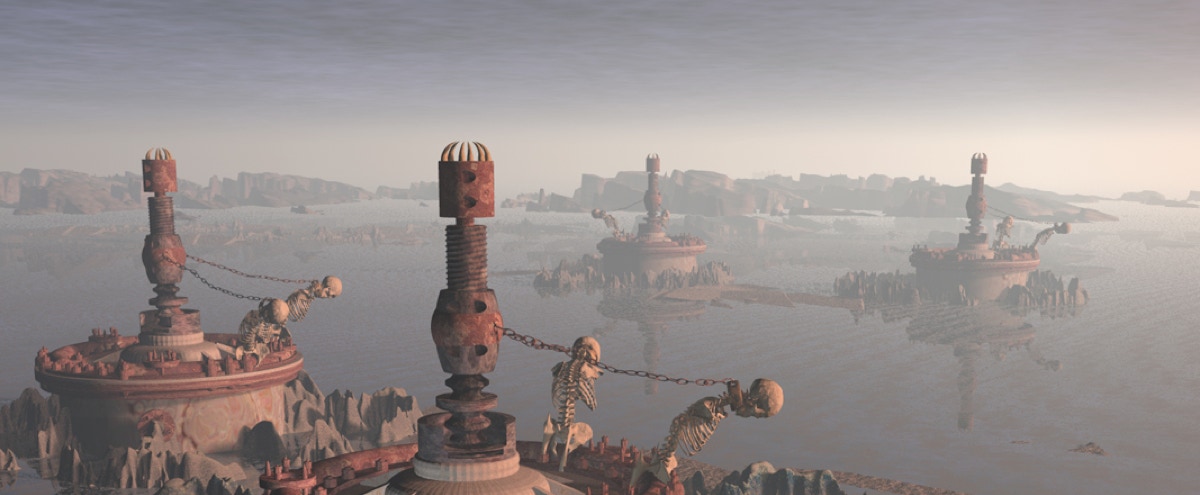Digital Art Manifesto
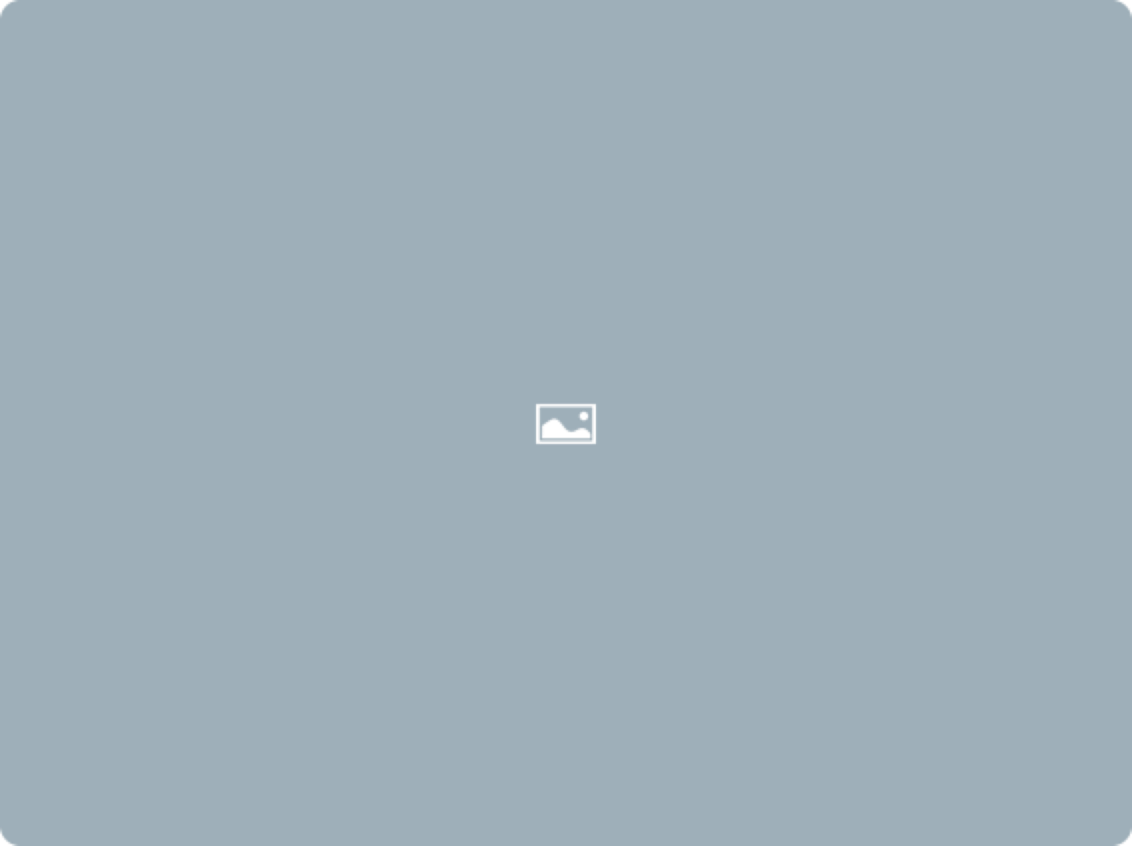
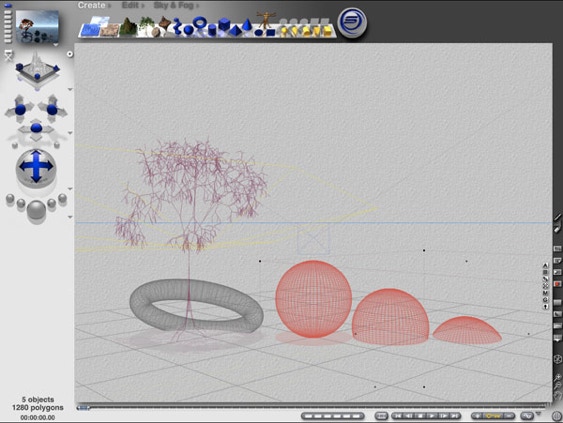
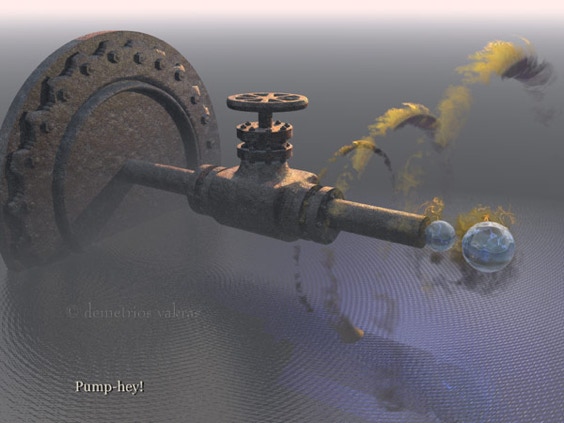
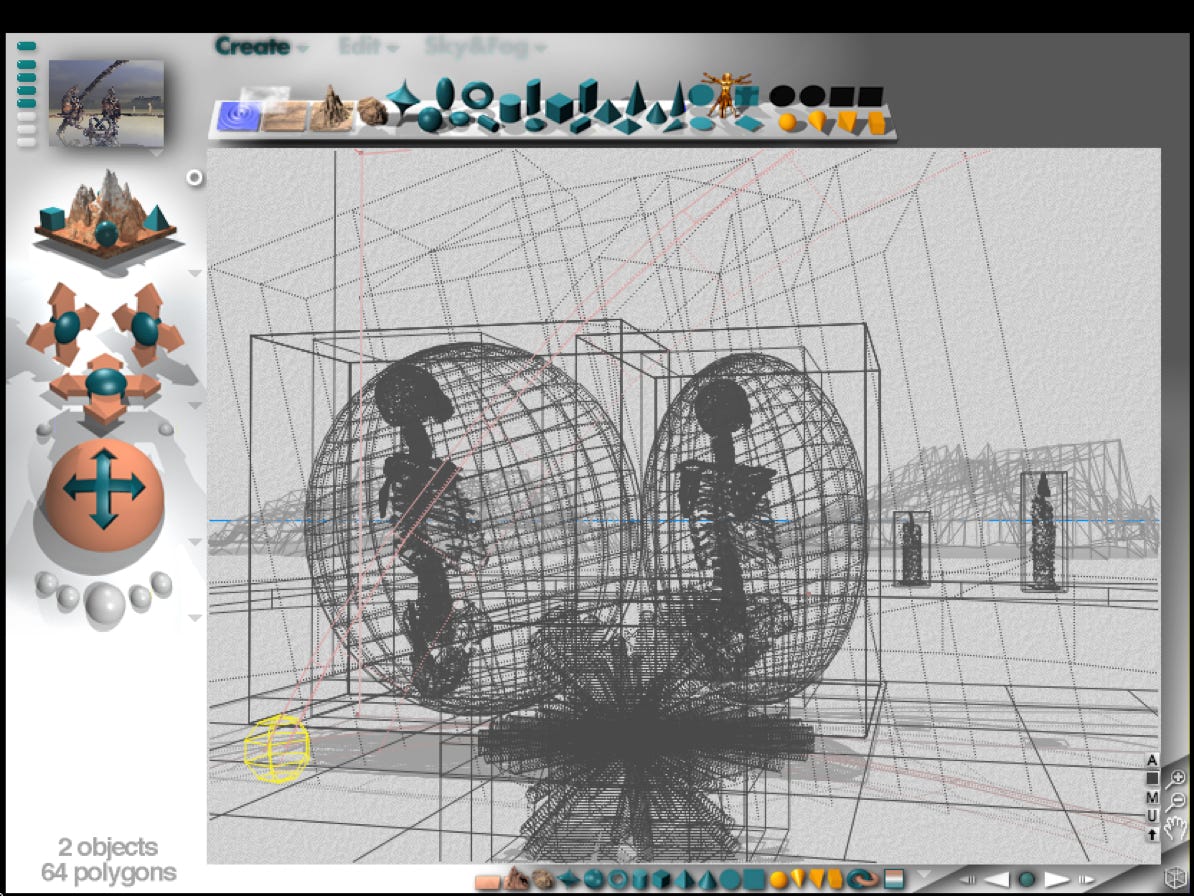
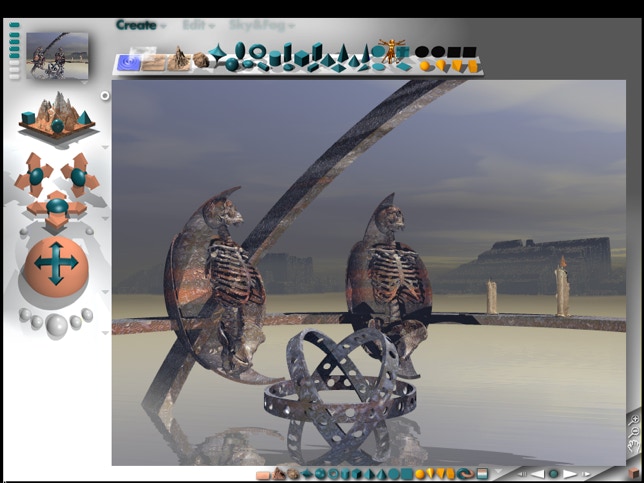
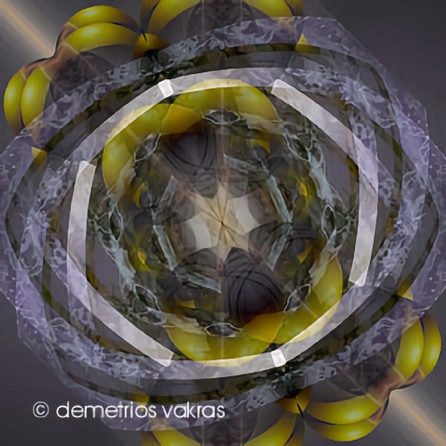
Two decades ago airbrushing was on the verge of being accepted as a legitimate means for artistic expression. Books published in the late 1970s and 1980s lamented on the hostility of the art establishment accepting airbrushing as a legitimate medium equal to oil-painting, water-colour or etching...... now, it doesn't even rate a mention.
Nearly a century and a half ago the advent of photography was to have replaced the artist altogether. That never happened. Photography happily coexists along side oil-painting ... which brings us to computer generated imagery.
Although possibly not a transient trend like airbrushing, digital "art" may become its own specialist field, like photography. But practitioners in the field have to understand one fundamental point which has to date been ignored in the discussion: and that is whether the work in question is art regardless of the media used in its creation.
... Take as an example H.R. Giger. His work is airbrushed. Of the plethora of artists whose works were reproduced in various tomes on airbrush art his are some of the few that are still recognised as art. Why? Because his endeavour was to create art, not celebrate the tool it was created with! (There are a few other airbrush artists, Paul Wunderlich for instance, whose art also transcended the celebration of the tool it was created with.)
There is a sense of deja-vu about the digital art movement at the moment. It has replaced airbrushing. And, like airbrushing, it has become the tool of graphic designers (who should never be confused with artists). What should never be referred to as art quite often is - and the quite awful is celebrated as the success of the "digital revolution".
Much 2D digital work tends to be based on photography and has become the domain of graphic designers. It tends to be a cut and paste of other's photography (collage) - with no credit given to the source of the material. That is, the real artists (photographers) have their works appropriated by a talentless hack graphic designer who imagine themselves to have created art!
(In 1929 Max Ernst published his "pictorial novel" La Femme 100 tetes illustrated with his collages of surprising and unexpected juxtapositions. They were works of inspired brilliance. Yet the 2D graphic designer of today who considers their works to be art has usually not even heard of Ernst!)
Other 2D digital designers tend simply to launch an application, say, Adobe Photoshop, or Fractal Design Painter, cut, paste, feather edges and apply various filters. With filters a preconceived idea is not needed. A different sequences of filters especially between programs can create different results and thus one source image becomes a plethora of "individual" works of art. This is the pretension to art with the click of a mouse - "art" borne not from the desire to express a thought, an idea, but instead created to achieve an aesthetic result... Thus it is decor posturing as art.
Alternately there are 3D programs with which to create digital images. With a program like Metacreations Bryce it is extremely quick to create an image. Most of these compositions are generally nothing more than competent flower arranging (although flower arranging may be "an art" it is not art in itself!). You select your objects, group them, select their texture, select the sky, click a button and watch a "painting" materialise. The unfortunate side of Bryce is the ease with which one can arrange objects (which the program can't model) and the assumption made by users that such rearrangments constitute art. The tragedy is when "Brycers" are celebrated for having done nothing more than import a figure (modelled in another program) into Bryce, arranged it within a scene, and then used a scan of a work by H.R.Giger as a texture (that is, the figure will have a Giger painting wrapped around it). The resulting image may look like a Giger, because it actually is. Copyright is an irrelevance to the Napster generation where the appropriation of others' endeavours is considered a right.
Above, THE ADVANCED AIRBRUSH BOOK, Cecil Misstear with Helen Scott-Harman, ISBN 0856135097, 1984, Introduction (featuring a painting by surrealist Paul Wunderlich titled Spring).
"This period might be seen as the golden age of the airbrush… The airbrush has long had a bad reputation in art circles… Partly to blame is its enormous usefulness for certain requirements of advertising…. In Europe until recently no gallery would show airbrush art, and it is still not widely accepted outside the commercial world except in the United States."
Wunderlich is one of the few airbrush artists to have succeeded as a fine artist. One of the few books on his work in English, Paul Wunderlich and Karin Székessy - Transpositions by Fritz J. Raddatz, is an expolration of the relationship of Wunderlich's paintings with the photography of Székessy. It includes a brief history of the impact of phtography on artists, and quotes a descendant of Daguerre (inventor of the daguerreotype) who declared "As from today painting is dead".
Visiting the plethora of 3D web-rings along with what are misleadingly titled "computer arts" magazines, I cringe with embarrassment at what passes for art. Graphic design is peddled as art because the graphic designers tell us it is. If there is a sense of "sameness" it is because constrained by corporate advertising dictates, the design cannot risk alienating the market it is designed for. Banality thus becomes a virtue.
(Note: this is much the same as the corporate world's tastes in "Fine Art". Usually a non-figurative work with splashes of colour, smears of paint, without too much skill, is hung on the board-room wall. It adds colour to the walls but doesn't have much, if anything at all, to say .... The art that has proven itself popular to collectors is nonfigurative. It does not affront the senses or sensibilities; works well in decorating corporate walls; is egalitarian, not "elitist", as anyone can do it; can be argued to be "avant-garde" as it rejects "traditional" representational art, and thus appeals to "intellectuals" & theorists... An entire industry of galleries, critics, investment bodies and artists has grown around nonfigurative art. They all have a huge financial and intellectual interest in promoting their point of view. Were it all to collapse the vacuous arguments of the arts intelligentsia would be exposed for what they are & entire collections rendered worthless, not priceless. 24/5/2001)
Nudity in art has been derigueur since the Renaissance... However in the digital realm any hint of nudity is to be censored. You won't, for instance, see any of my images which feature the figure - for example the haunting i or hephaesteos' post industrial muse - reproduced in digital art magazines! This censorship might perhaps be pertinent when it comes to advertising or for book/cd cover illustrations, however it has no place in art.
At this stage I cannot see digital art being defined as art without being ridiculed. There are some brilliant artists but they are swamped by a teeming mass of mediocrites, illustrators who should never be defined as artists but often are. Ultimately, those digital practitioners who will be deemed artists will be very few indeed - as was the case with airbrushing.
(I must, at this point, confess to an admiration for the 3D work created for the film industry: 3D animation. With high-end 3d programs (including the disastrous Lightwave) we have a new art of the imagination animated. However, it must be noted that this industry does nothing more than animate the ideas others have drawn, others have conceived, others imagined, and thus by definition is a craft like that practiced by carpenters, set-builders etc., rather than art. There has yet to be a digital Jan Svankmajer.)
Both my painting and 2D work are dependent on my photography... you can't get an engine & carry it into your studio! As an illustration of my methodology, my (2D) digital image Demolisher Suspended is based on photographs taken on the 13/2/2000.. About a block away from where I live was a truck weigh-in station. It was being demolished. I happened to be going past and saw the demolition taking place. So I went home, picked up the camera & walked over. I already had an idea as soon as I saw it!
Amazingly though, some images which are successful as oil paintings, work poorly when I have tried to create a digital version of them referring to the same photographs ... Some of the digital work... would never have been put together as an intended painting because I would not have thought of it as being worthwhile doing so!
Doing your own photography means you have observed the details yourself, and not simply relied on someone else having done so.
But despite the attractiveness of the speed with which images can be created digitally, I do not see these images as a substitute for painting. I have far more options available to me in painting. But more importantly, it has taken me 25 years of practice to become as good as I am. Digital art is about as easy as it gets! My Photoshop images in my main site were created within a matter of weeks of the installation of Photoshop (23/1/1999). I had never heard of Photoshop prior to that & had never used a computer before. The Bryce images are a similar story. I only purchased & then installed Bryce 3D in March of this year (2000) & have virtually created an entirely new web-site of these digital works!
Ultimately, painting remains something to marvel at. It is the understanding that someone has picked up a pencil or brush & faithfully rendered not only what they saw before them but also what they can imagine. It is something that requires years of practice to perfect, and something that most people are incapable of achieving. The problem with digital art is that anyone can do it!
Digital art offers a virtually unlimited scope for the articulation of an imagination. The great shame is that the vast majority of digital "artists" are those without an imagination as if the purpose of the medium is to give opportunity to those who never had the talent to be artists in the first place. It is much the same as the claim that viewing art on a computer screen can replace visiting an art museum! There is nothing more breathtaking than looking at painting in an art museum that one has only ever seen reproduced in a book. Reproductions of paintings in books are of a far higher standard than anything a computer screen could show. There seems however to be a predisposition to making vacuous statements within the world of the virtual.
Demetrios Vakras 15/10/2000 (re-edited 11/1/2002, 26/7/2002)
Post Script
Whereas in the real art world 3d art is ACTUAL 3d work, sculpture (and assemblages), the computer generated art world has comandeered the word altering its meaning. In this 'digital realm' of computer generated images 3d art is that which is composed of 3d wireframe representations of objects (see screenshot examples below)
Addenda 26/7/2003
Today, Saturday 26 July 2003, I stumbled across a computer "art" magazine which in the edition I was looking at, featured an "artist" who extolled the virtue of digital art creation.... I'm not sure what purpose the images served other than to emphasise the shear ease with which anyone can create aesthetically pleasing images on the computer... In the manner of this "artist" I created the image below:
…very pretty, but does creating it, or anything like it, make the creator an artist? ....Since when has design been interchangeable with art?
Seduced by the absurdity of the assumption that an instant artist can be made where one did not previously exist, I decided to create a series of "kaleidoscopic" digital images of the kind that confoundingly so enthral some.... simply to demonstrate how easy the process of digital art creation is. First, I created an image in Bryce (created solely by the computer) below:
...no artistic ability required here... Next I took this image into Photoshop, duplicated it, flipped it, and created the following series:
...Very pretty perhaps, but, how much skill does one require to create a simple pattern...? I could have kept going, creating an entire oeuvre in one solitary day ... launched myself an entirely new website & declared myself an artist on the basis of these works... However, since when did the creation of wallpaper become artistic expression?
Addenda 27/7/2003
..And, when it could have been assumed that the potential for additional images from this one source had exhausted itself, I decided that if I combined my first image ( nude with bird wings) with the "kaleidoscopic" image I could then create yet another image...or even a series if I wanted to:
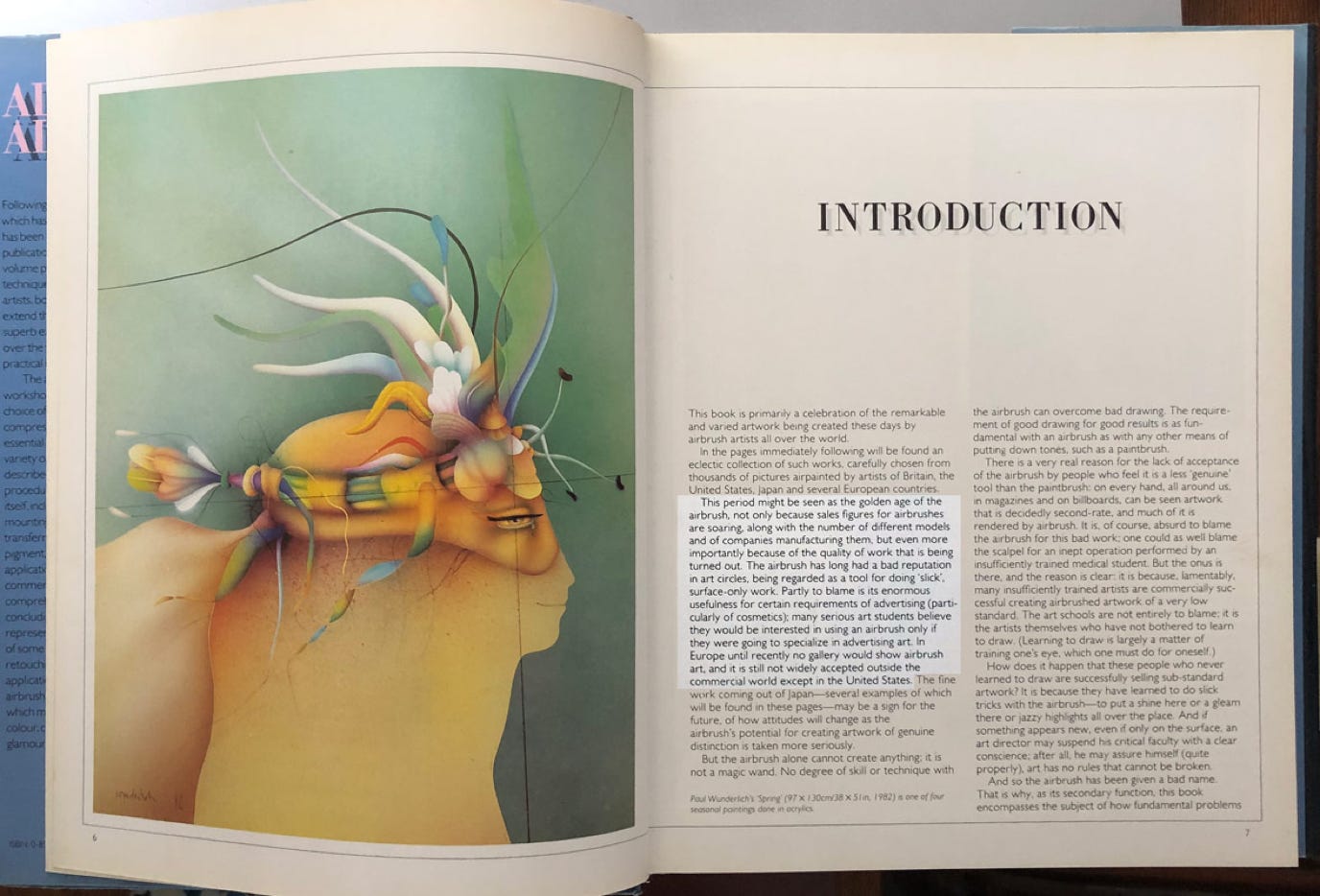
Bryce was a pioneering computer graphics creation tool. The first version I bought, Bryce 2, included a manual which I kept beside my bed. In it the code-writers' enthusiasm and excitement for their creation was palpable. The ease with which a simple scene could be created meant that you had no need to be an artist, or a hard-core computer user to create - which unfortunately meant that many who used it came to believe that they were both.
Top left, screenshot of Bryce in use showing wireframes. Very simple. Click on the tree; click on the torus; click on the sphere a few times, and then render, top right: no skill needed. An image similar to the one that I have created in this instance is used in an essay on "digital surrealism". It is digital, but it is not surrealism. Above left, a simple image I created in Bryce with a gear I created in the terrain editor. Above right, another simple image I created in Bryce after importing a Poser head. Such images do not require you to be an artist to create them and you do not become an artist by creating them.
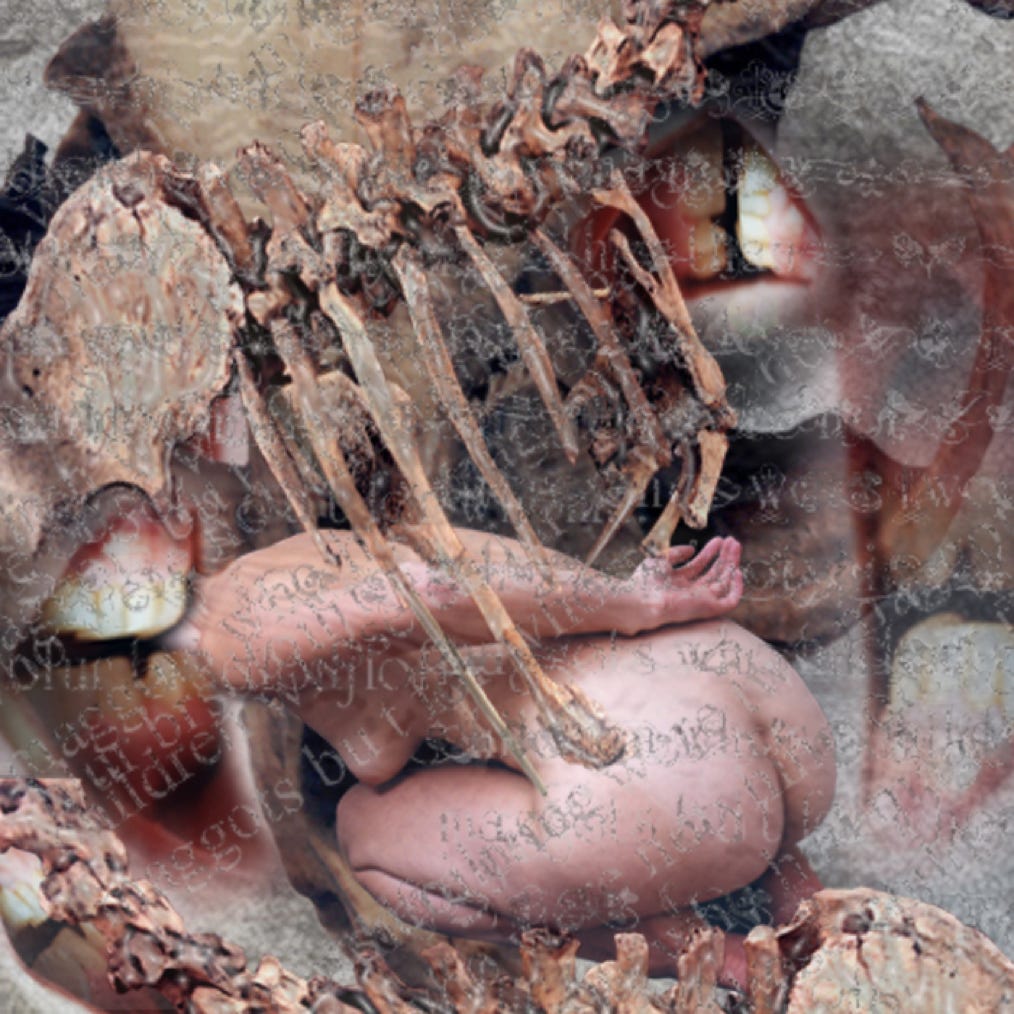
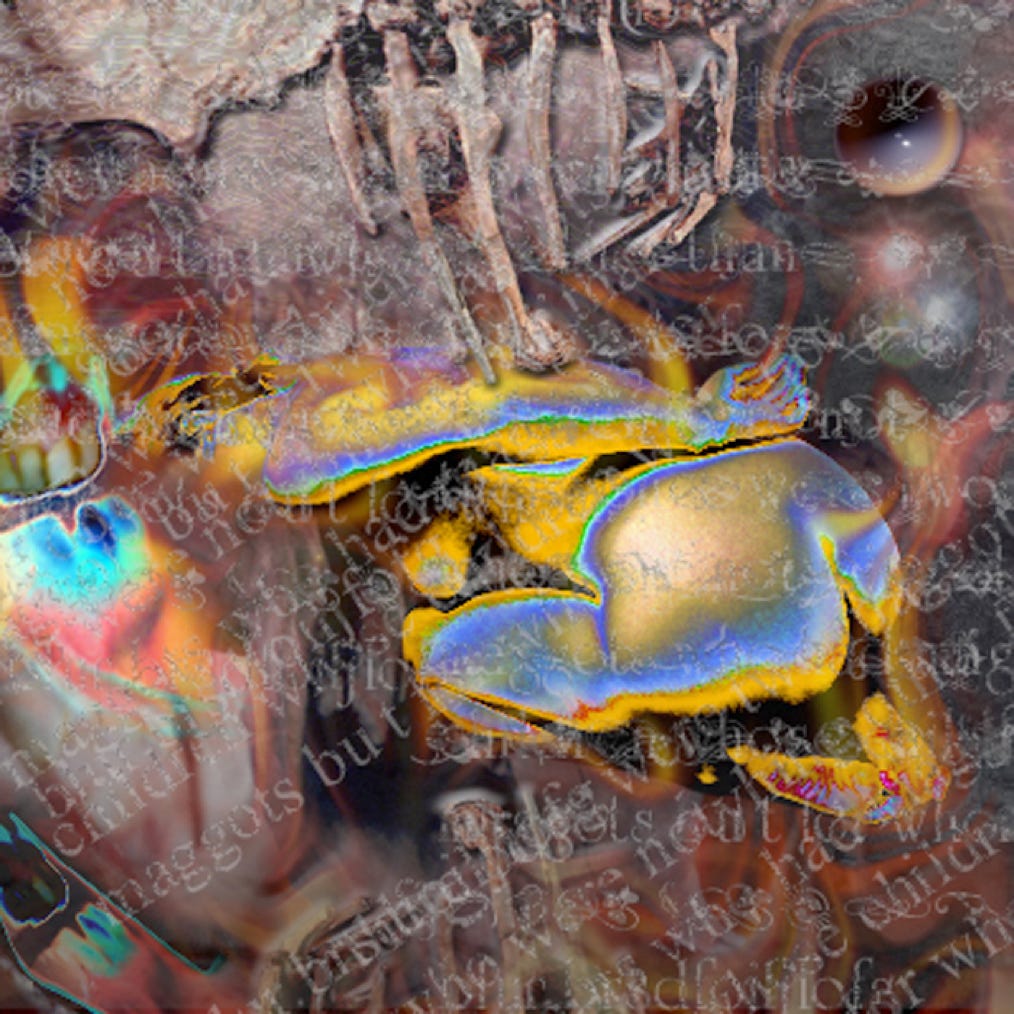
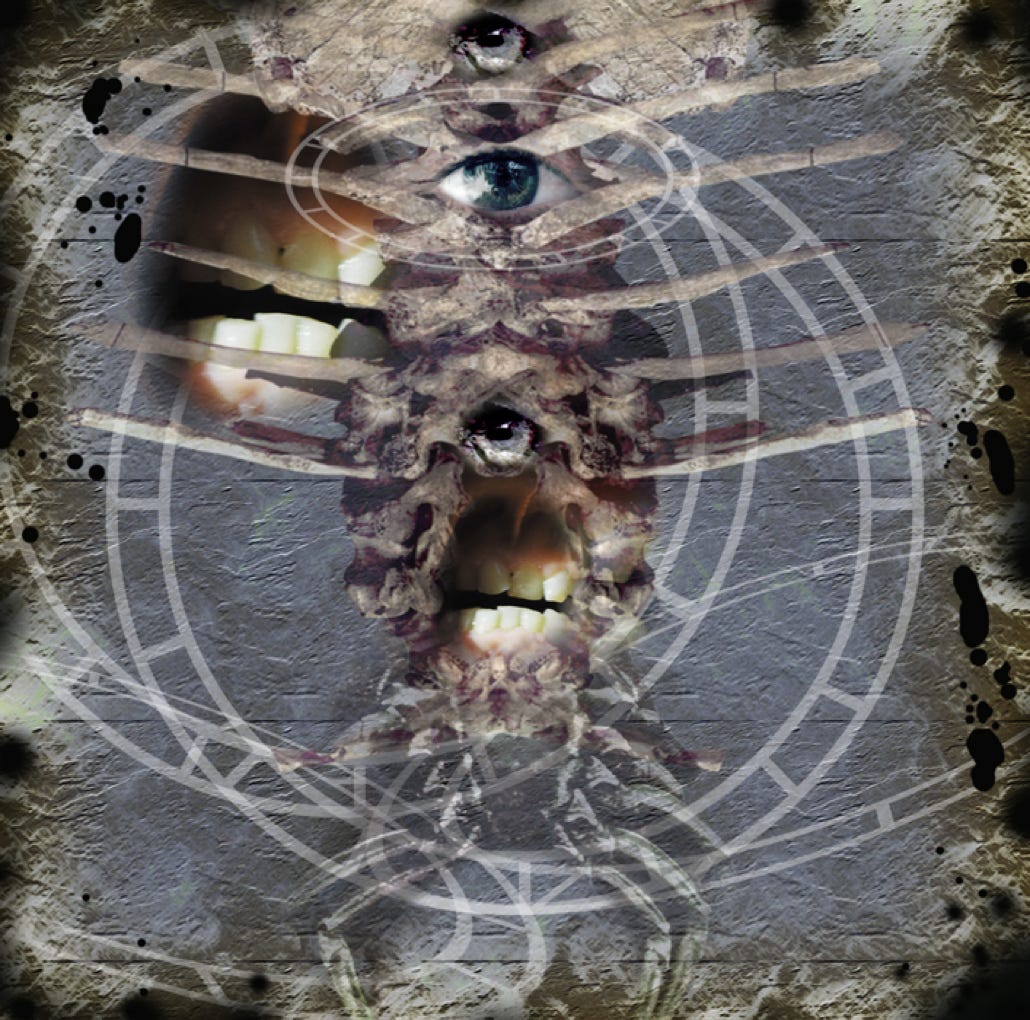
Top left, crap-another2, 2002,, was created on 16/1/2002 in the manner most favoured by many 2d digital graphic designers - some who have bewilderingly achieved some prominence and whose work is often confused as art. This is but one of a half a dozen different images created in the space of half an hour. Its creation was simply a cut and paste in Photoshop with multiple layers at varying levels of transparency. Further effects were applied in Painter 5. All one needs is a computer, some programs and a few clicks with a mouse……And after using some more filters the result is the image crap-another2, another, top right.
Left, junk jpegged, February 2004, is another example of the popular, populist, formulaic and faddish illustration which is peddled as art.
These images are wireframes of objects which are then given a surface (essentially a skin) and then "rendered", that is the computer actually generates the 'painting'. It should be referred to as virtual 3d....
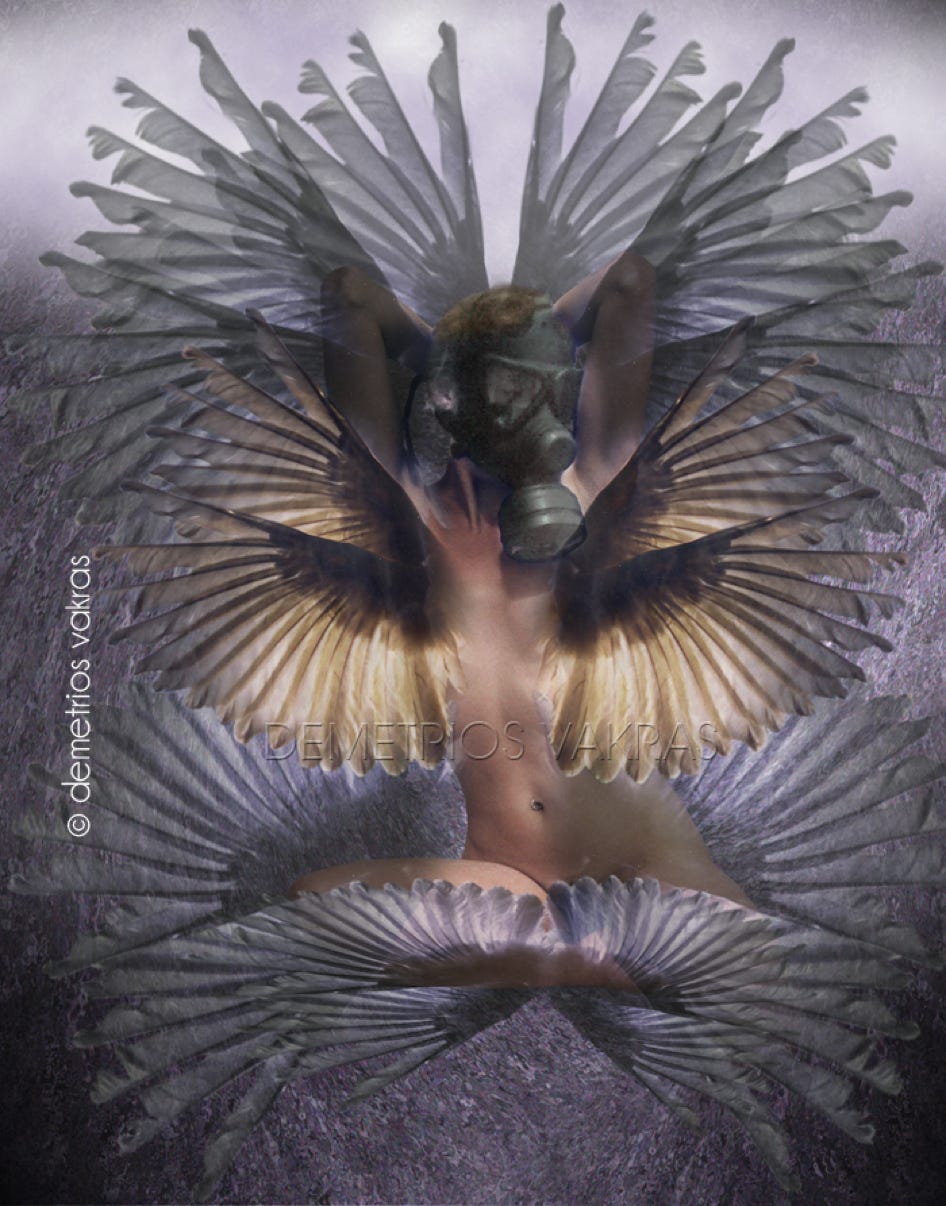
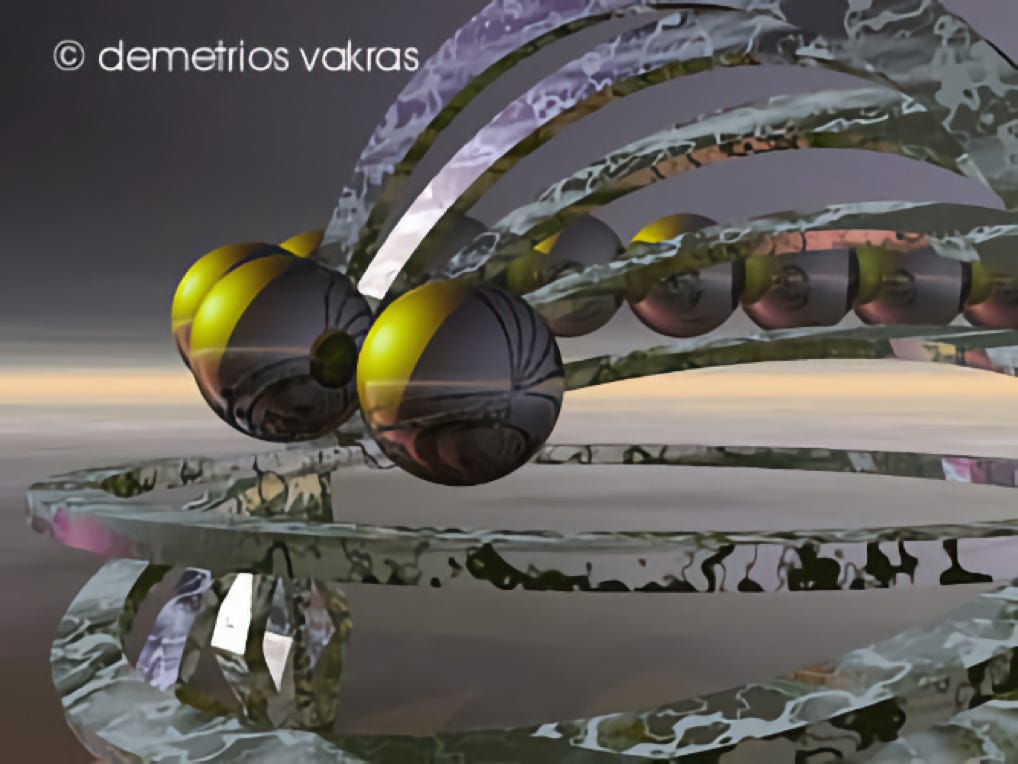
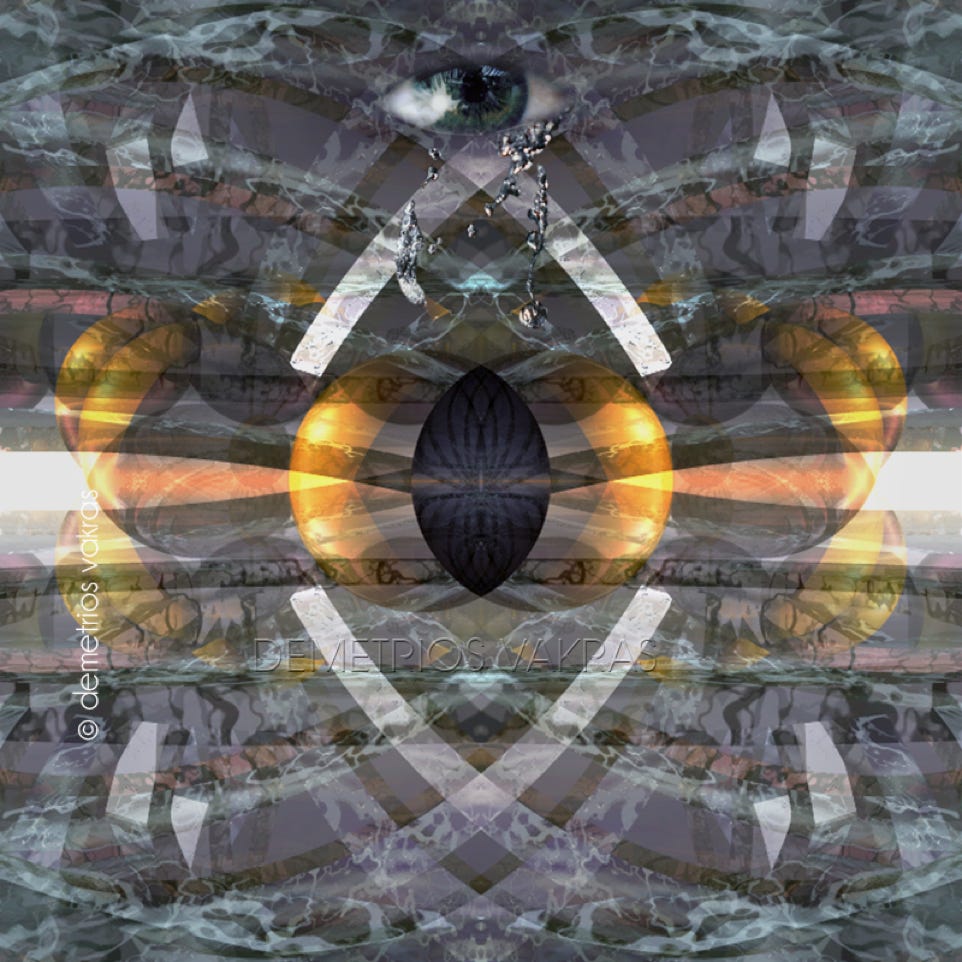
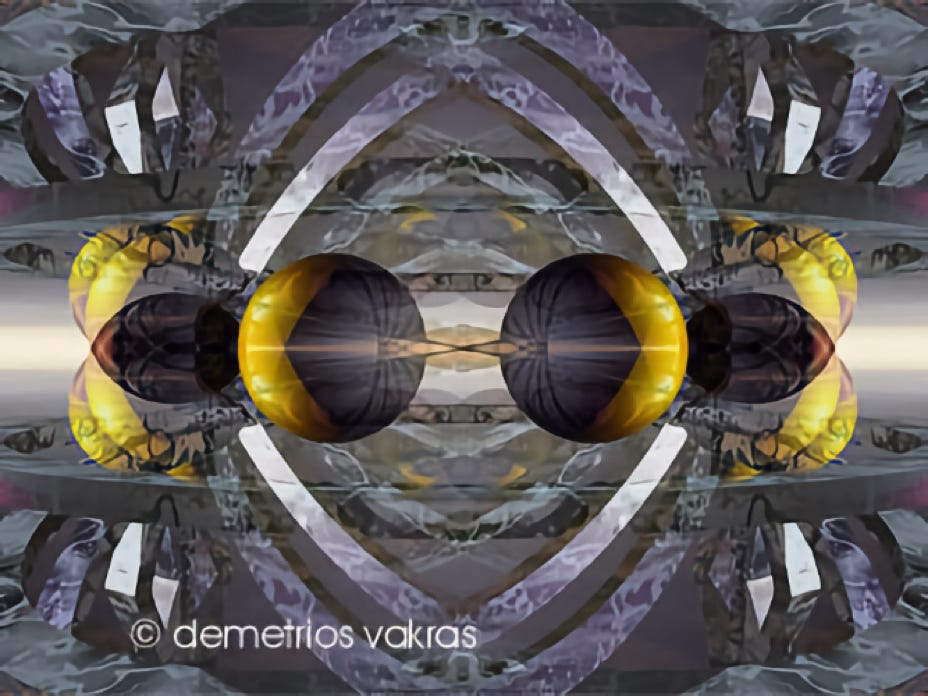
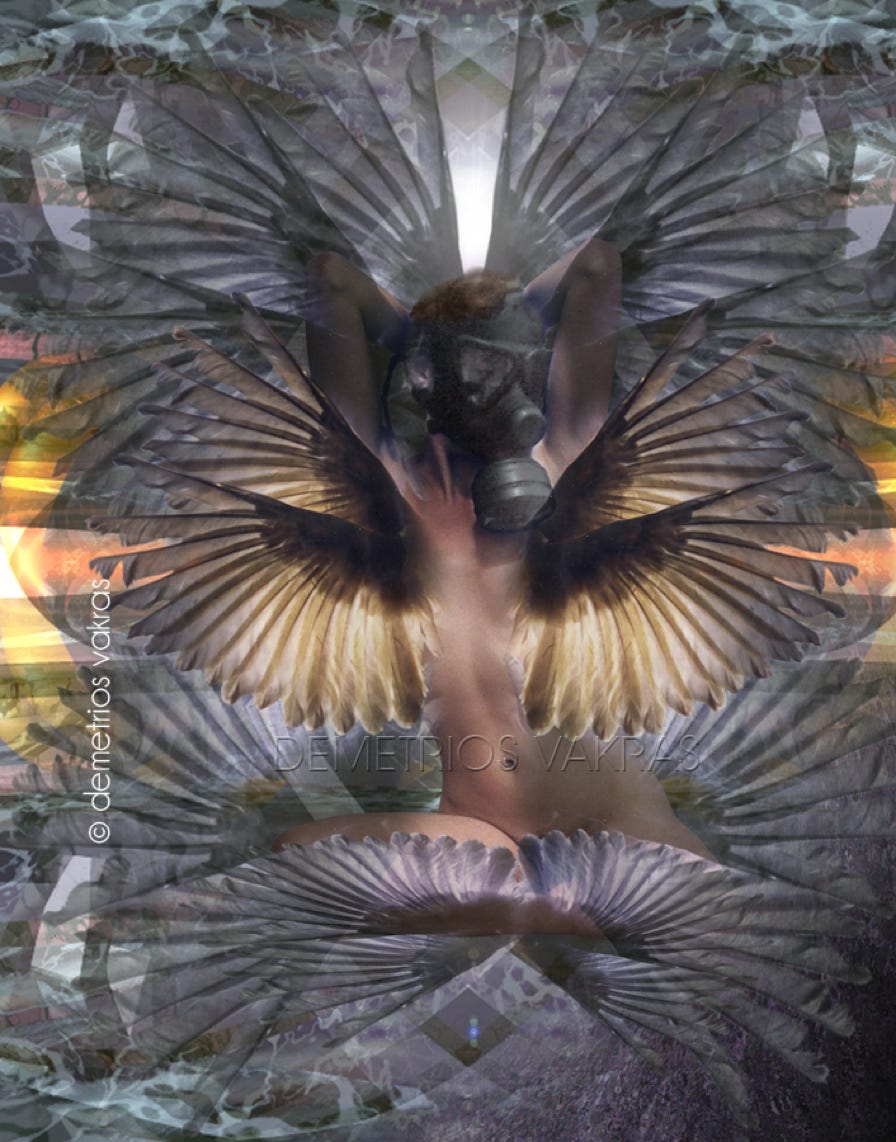
..And if I went just a little further, I could apply the same technique to another image and create multiple images (below):
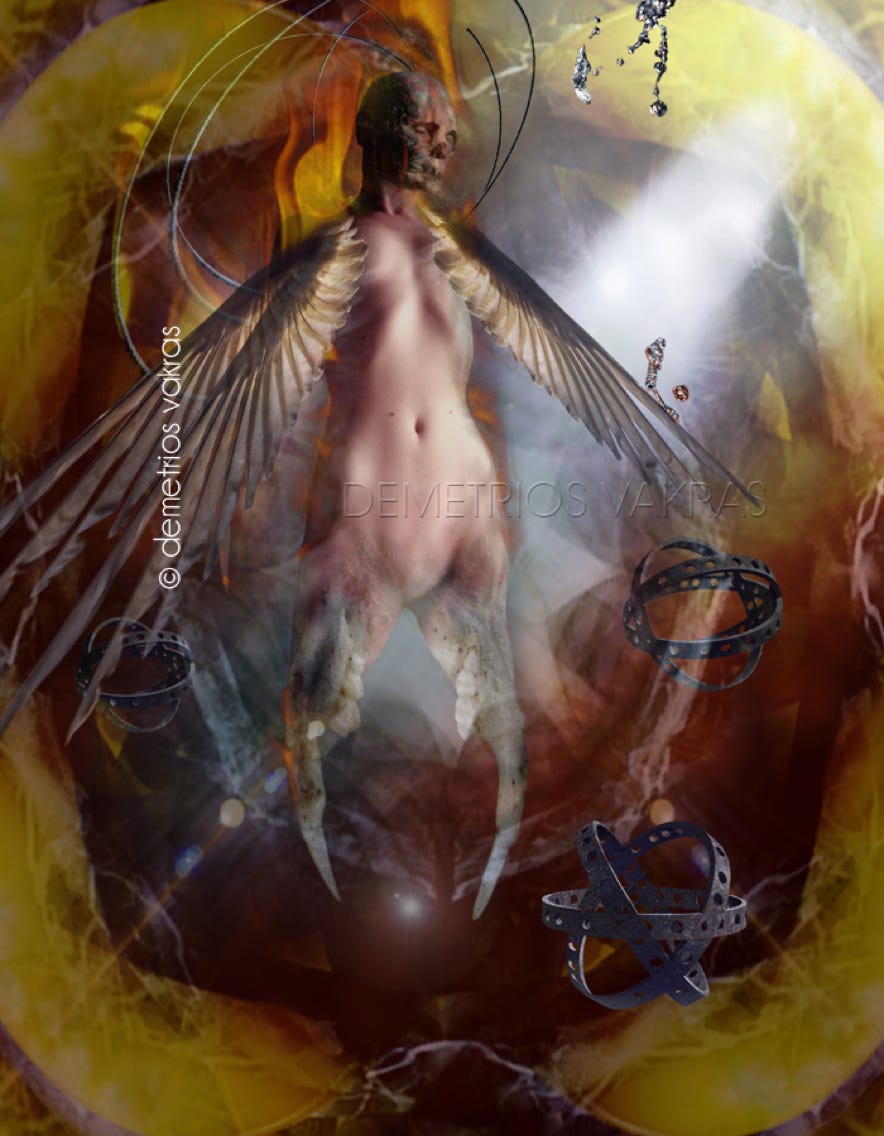
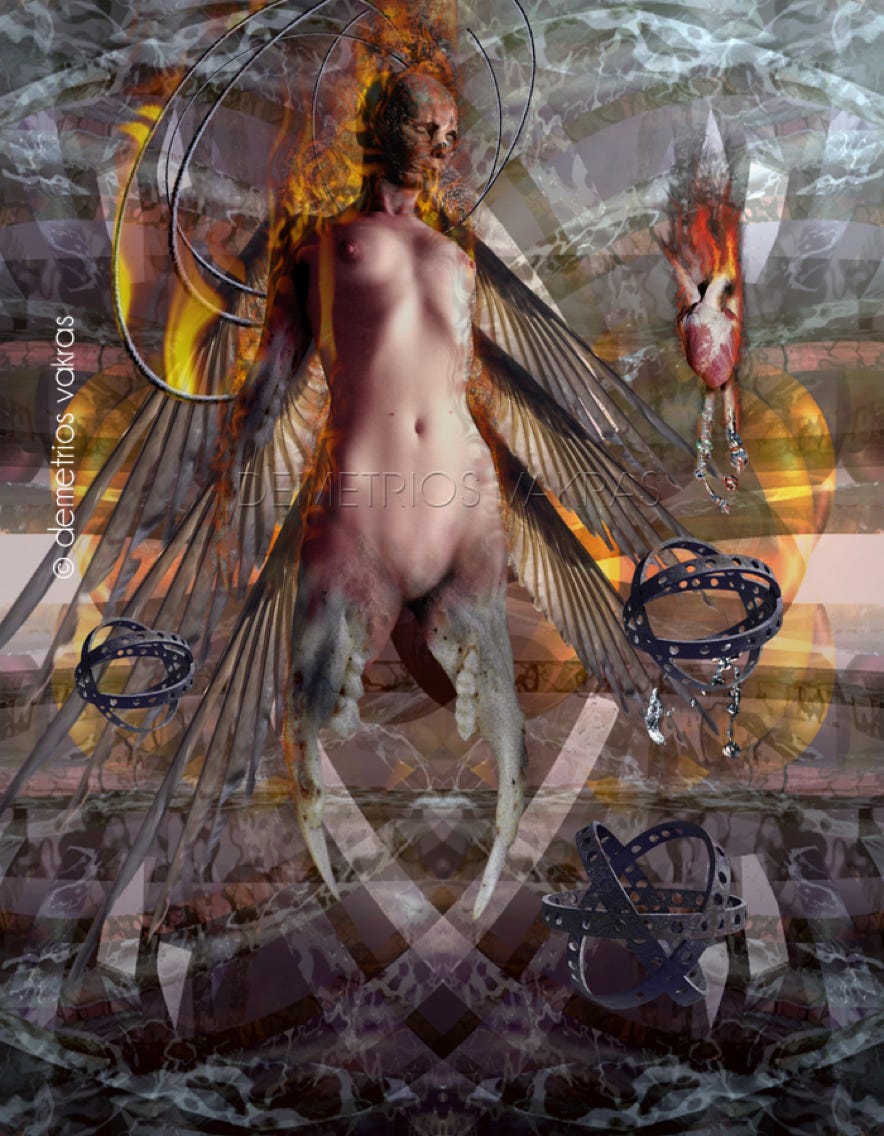
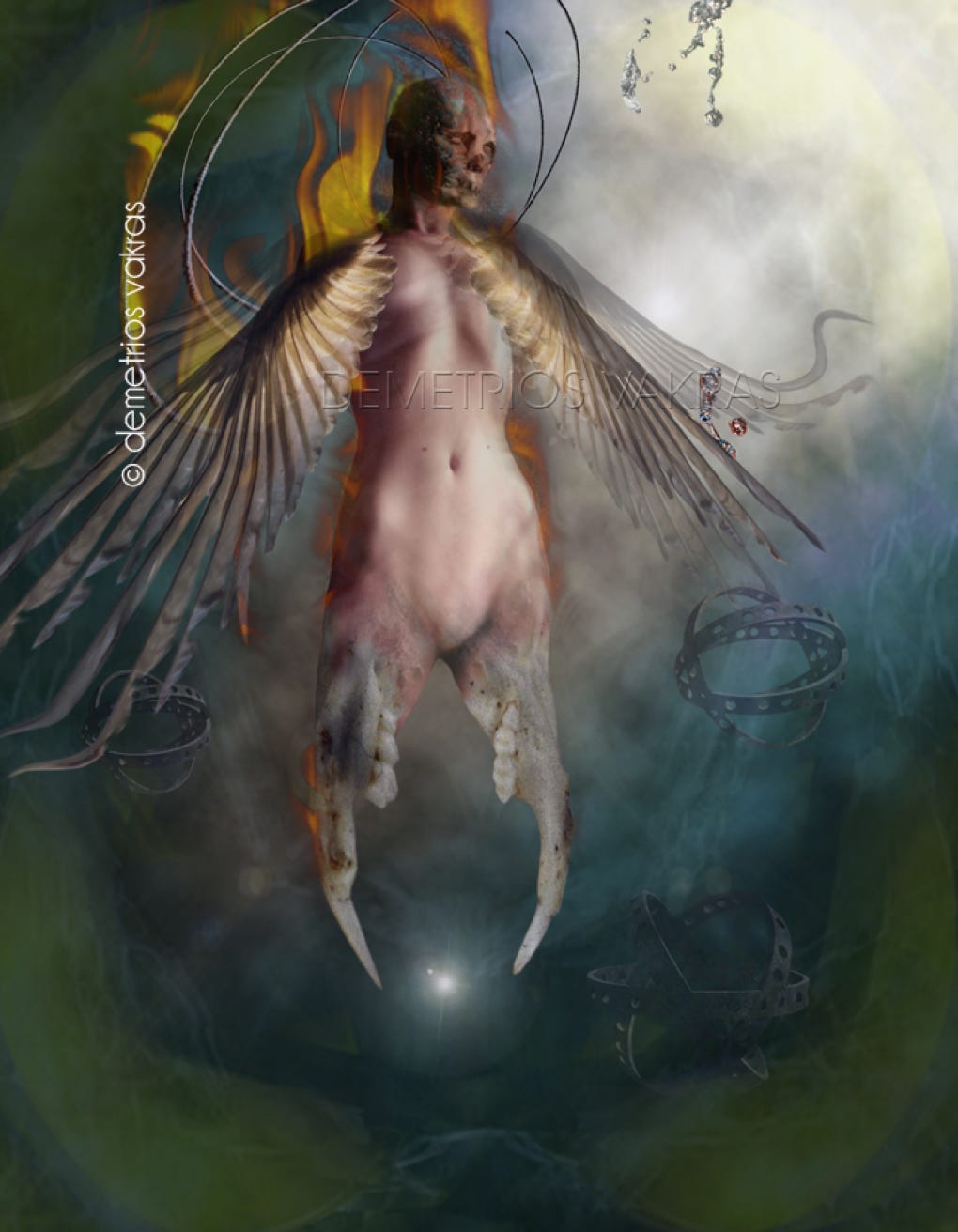
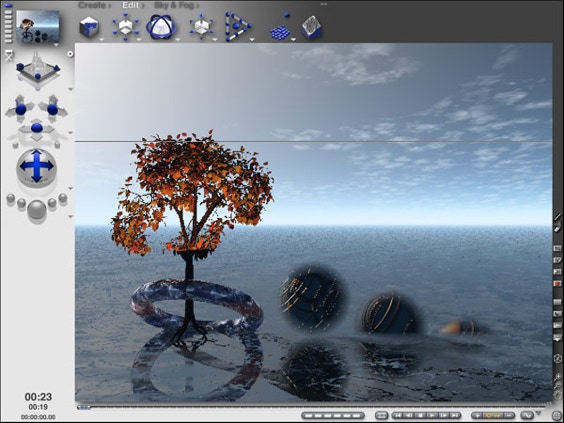
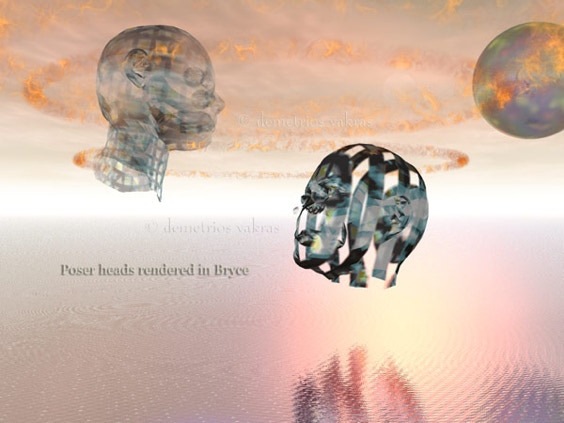
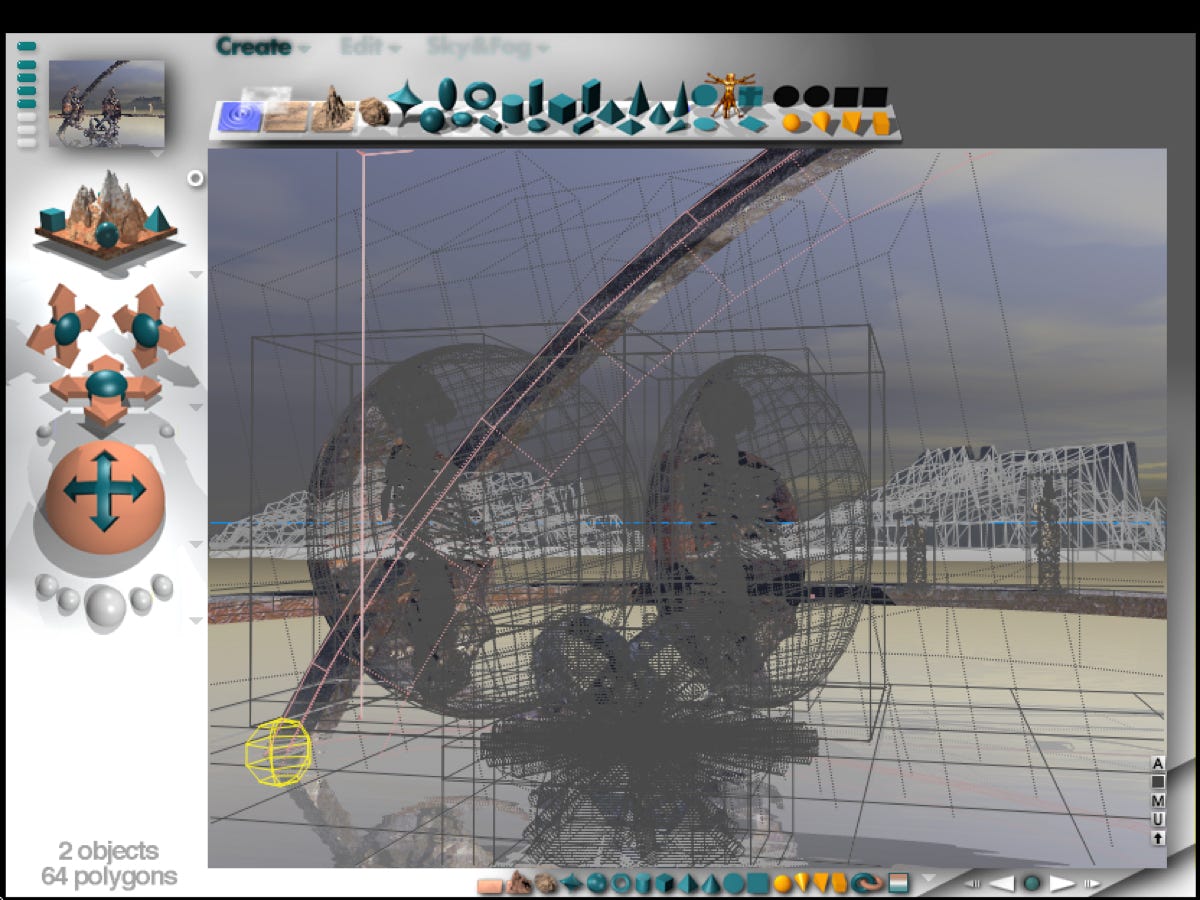
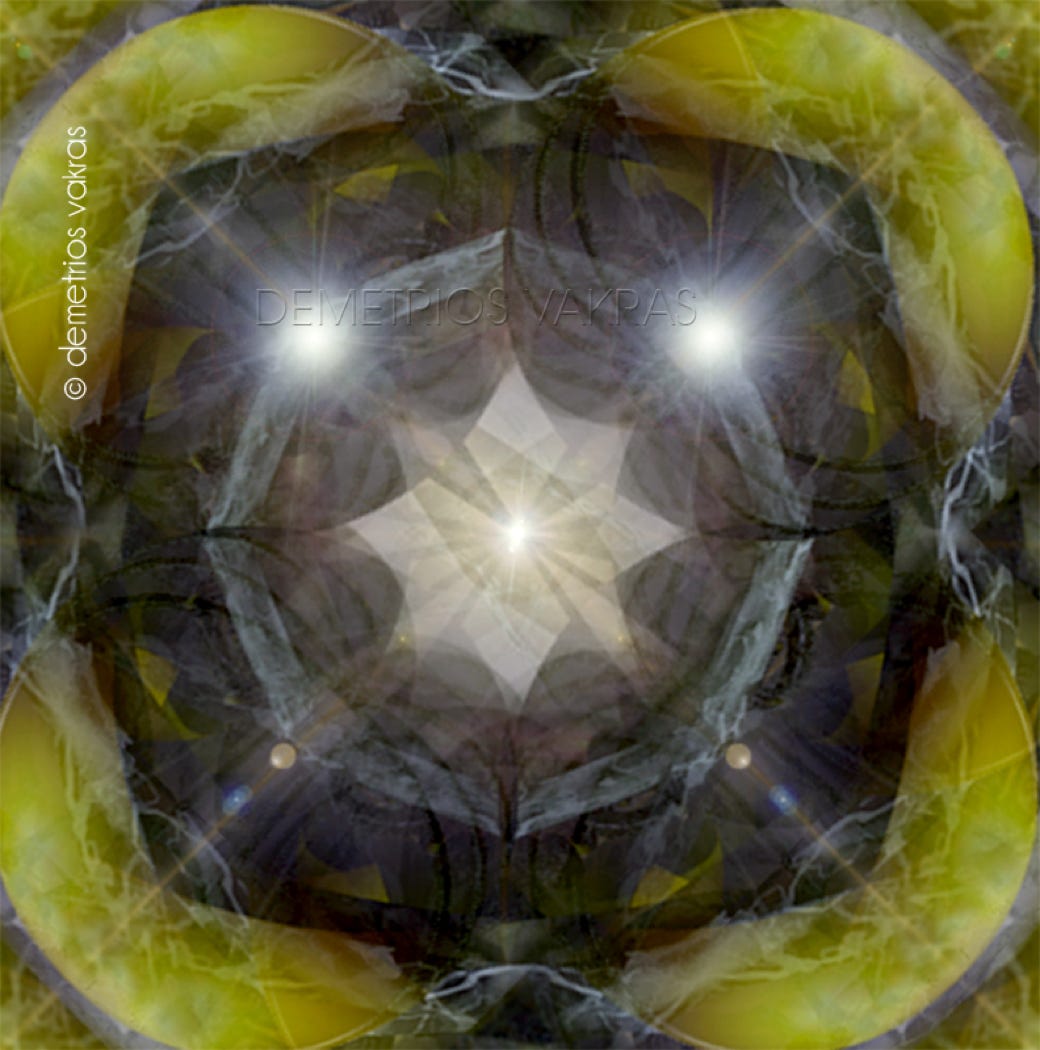
Addenda 12-16/2/2003
...examples of the popular, populist, formulaic and faddish illustration which is peddled as art...
I have been told that these images destroy my argument as they are aesthetically pleasing. The point is though that art is an uncommon talent. Any non-artist can produce what I have below. It is a very common talent to be able to produce images like this - skill is not a prerequisite. Anyone capable of creating decoupage or even arranging flowers can create images such as the ones below. ... It took me around half an hour to produce these three (although I took components from extant 'digital' images of mine for junk 3 & 5) and the only thing I had to do was to rearrange what I had until the various components fell together producing an image that looked good...Below: junk 2, junk 3, junk 5 added 16/2/2004
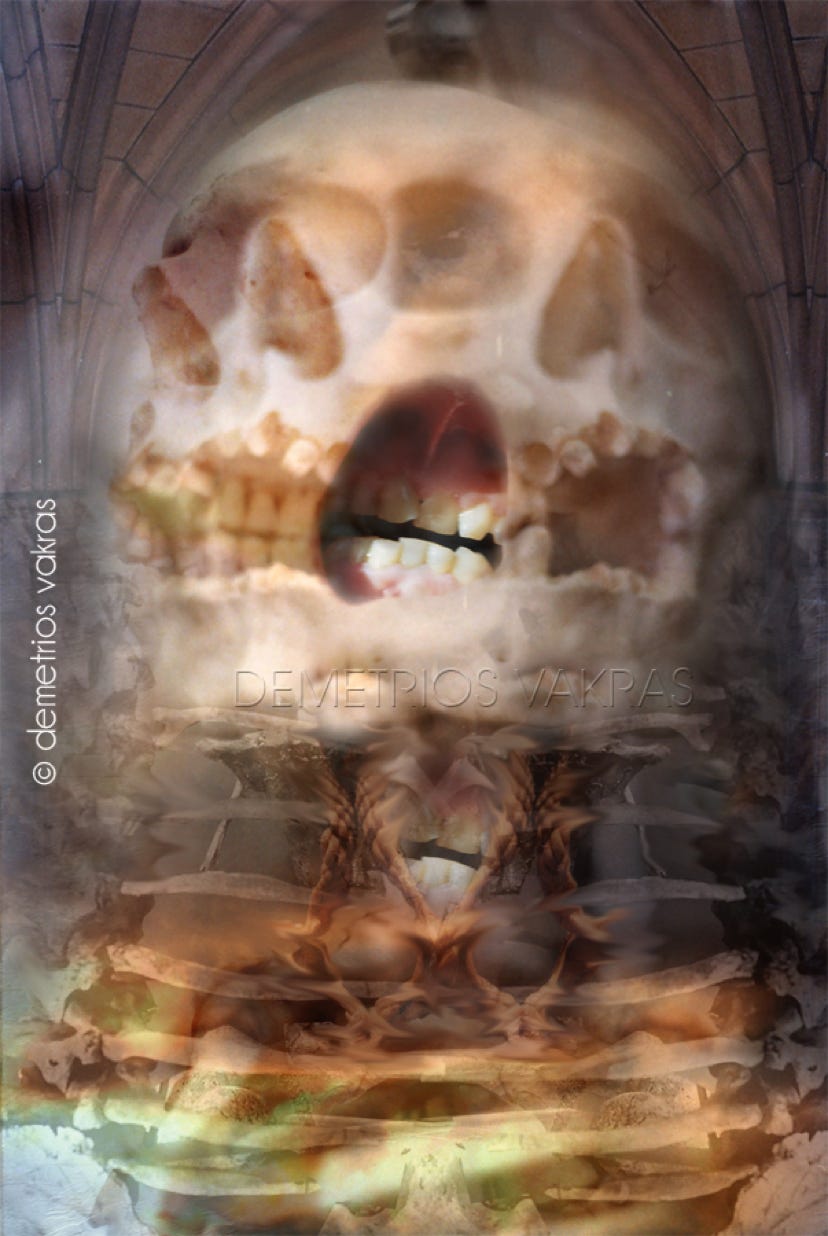
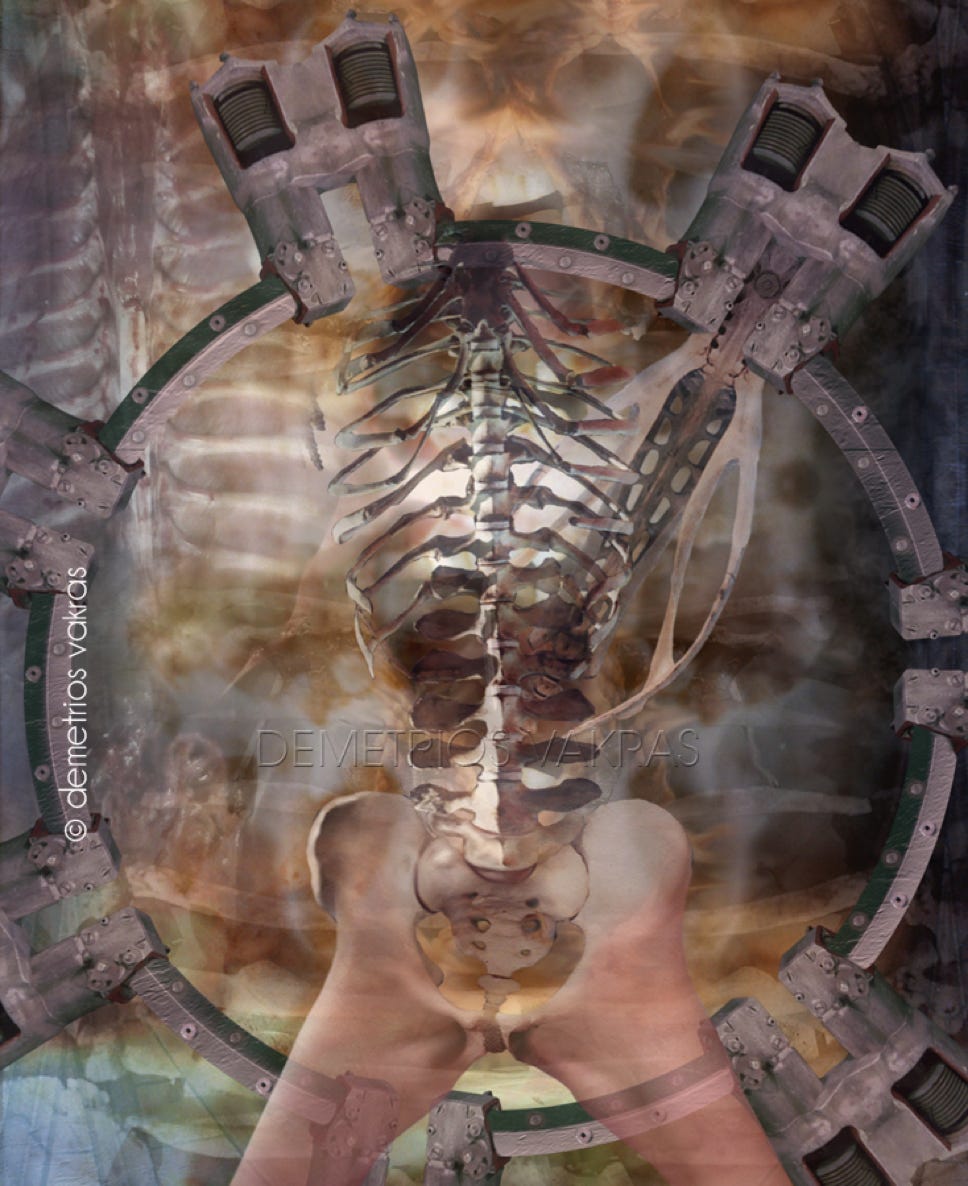
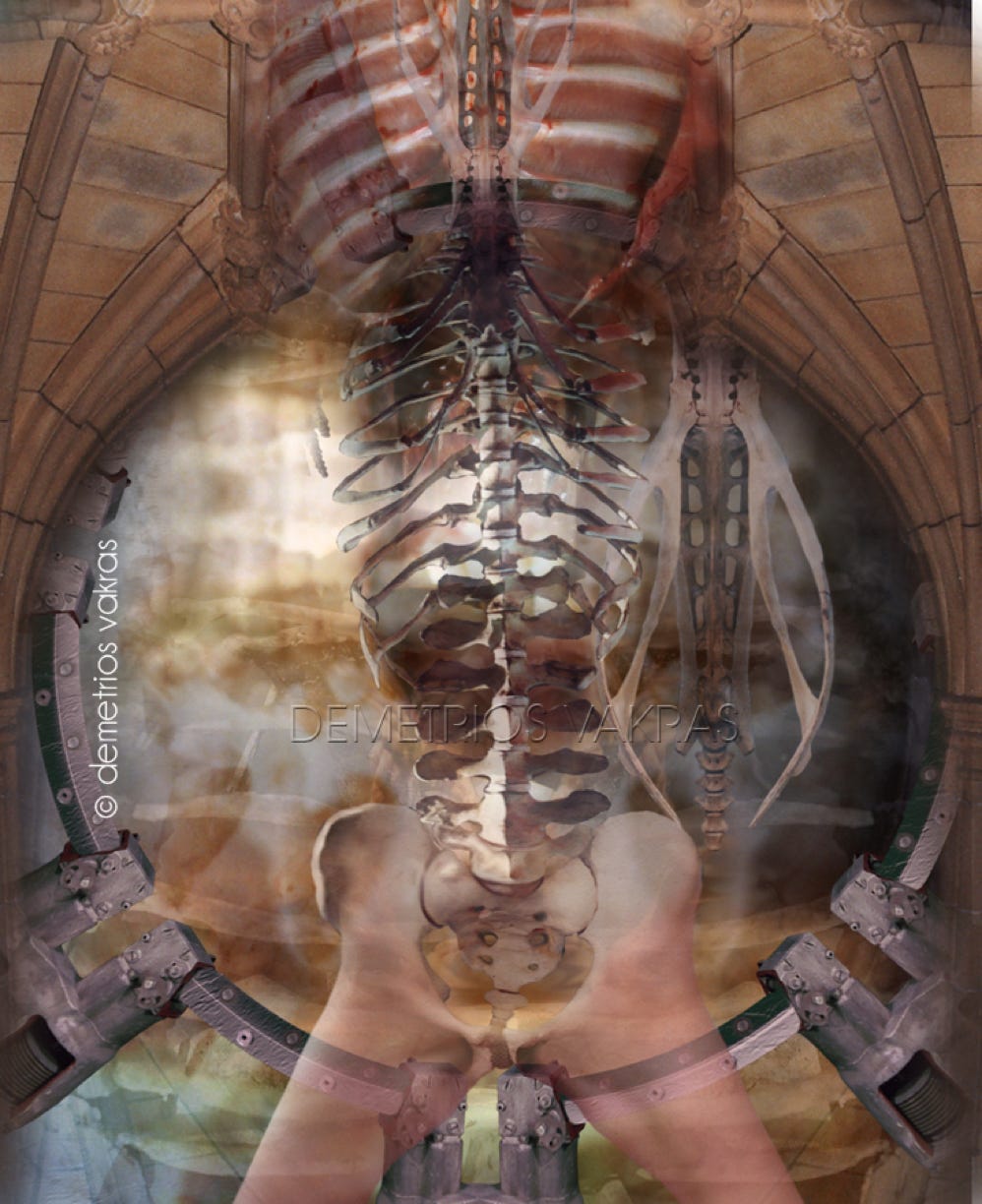
Addenda 12-16/2/2003
- a general art essay -
To be fair, much of the criticism made on this page regarding "digital art" can be made about art created by what could be described as a 'traditional' means. However to create a painting, even if it is simply a painting of squares & circles, or even scribbles, the artist still has to buy a stretcher & stretch the canvas; still has to prime the canvas; and still has to find the time to paint it... & if what is done doesn't work out, the artist can't hit the history palette & proceed to the last state of the image with which he/she were pleased. Further, with traditional artistic media (including sculpture as well as painting) the works served a purpose greater than being a simple decorative visual, decor. At the very least it is prerequisite that an artist of traditional media know something about the history of expressing an idea so that any presumption of ones personal originality is tested against the history of what was expressed before, so that the artist does not express poorly what someone else has already expressed much better. The absence of an historical context might give us an 'artist' prone to a personal fantasy about their own originality.... Such a delusion might even lead one to assume that artists like Giger, for instance, have no precedents, simply as a consequence of the ignorance of his precursors: Hans Bellmer, Ernst Fuchs, Felicien Rops, or even Thomas Hafner. This ignorance might even entail that on viewing the work of an old master, say Hieronymus Bosch, our ignorant viewer might imagine his masterpiece The Garden of Earthly Delights, to be no more than a celebration of sexual fetishism, a decoration intended for a mediaeval bondage boudoir, utterly oblivious to the message Bosch's religious painting intended to impart, its purpose: that the hedonism depicted in the central panel of his triptych leads only to the final panel, eternal damnation. This general ignorance may yet betray a greater misunderstanding ... of terms like "muse", with our ignoramus not knowing that the arts themselves were the muses: music, painting, ... human knowledge... An artist's model is simply a model, not a muse. And any model who assumes herself to be a muse merely suffers from her own personal delusion..... (a gallery director I came to know imagines herself to be a muse).
Such an historical ignorance could also lead to a supposition that my own art is merely decor, with my work reduced, in this viewer's mind, to mere illustrations of fetishism ... the result of a disturbed mind ... with my work seen as either intended to decorate some dark fetishist boudoir, or as an expression of a personal fantasy in which the art is seen as a kind of voodoo doll. However, such conclusions are a corollary of ignorance.
Although such an ignorance of the history of visual expression is absent amongst bona fide art practitioners I personally know, it seems to be a defining aspect of digital practitioners who imagine themselves to be artists rather than illustrators; imagine that art and illustration are interchangeable terms; indeed, imagine that great art is nothing more than financially successful illustration/design. Such a practitioner would see their digital creations as being a means of expressing their own personal fantasies, illustrating their thoughts and aspirations. This rather strange phenomenon has nothing to do with art and seems a corollary to the psycho-therapeutic assumptions art is imagined to possess since psychologists assumed art was cathartic and that artists could be psychoanalysed through their works. (Such tardy misplaced psychoanalysis famously led some psychologists to declare that Magritte's Red Model was an expression of a fear of castration!) Thus a mind ignorant of art and the history of artistic expression (without even an ability to draw) can, by turning on their computer, create digital images with the supposition that art is a celebration of what is depicted. This gives us an insight into a dangerous mind when this mind writes in his artist statement that his work grew: "...on a steady diet of death metal, [and] serial killer books...". When this same practitioner communicates to you via email that some of his works are illustrations of the crimes of one such killer now on Death Row, and that he sent this killer images inspired by this killer's crimes (fan mail), asking him for his views, then we are exiting the world of art and entering the realm of a personal fantasy where the 'art' plays no role other than as an expression of this practitioner's psyche. One suspects that the computer in this instance has spared his society from the prospect of violence as he acts out his fantasy of committing this violence in his images instead .... There is a difference between what is art, what is illustration, and what is therapy. And in this instance the 'art' is no more than a voodoo doll.
Other practitioners in the digital field however have some knowledge of art history, but appear to apply it cynically. One such illustrator, has produced an image titled "The Perfect Outfit"(c. 1998?) and in his book describes this image as having arisen from a realisation whilst shopping that the plethora of women's clothing was intended to emphasise what it was attempting to conceal , thus he depicts a human skin (like a one-piece swim suit) articulated with breasts, hanging on a clothes hanger. However, this has been done before. John Holmes' painting "the female eunuch" is precisely this image with the addition of handles. This was the cover of Germaine Greer's famous feminist polemic of 1971 The Female Eunuch. This image by Holmes was also reproduced in the book Fantastic Art, edited by David Larkin & published by Ballantine. Even so, the idea of emphasising what is intended to be concealed was a preoccupation of Magritte. Magritte's Philosophy in the boudoir of 1947 with its night-gown sporting breasts and shoes culminating in toes is one of the masterpieces of 20th century art..... To be fair, this artist's images are generally original. However, one wonders why an image is not declared a homage - in the context of his knowledge of both marketing and fine art any claim of ignorance would seem to be an anomaly...
This essay was written c. 2000, with a number of addenda in the following years. In 2025 I edited it to include additional elements.
This manifesto has elicited irrational irrelevant and bizarre reactions.
To those who in the past have written to me to object to what I have written:
If you know nothing about art, or its history, photography, the history of photography and its relationship to art painting (and drawing), and you can't draw or paint, it does not matter how long or hard you bang on your keyboard or click your mouse it won't make you an artist.
On re-reading my piece in 2025, I will add, that a far less creative society has emerged since I wrote it. Those lacking artistic ability are now using LLMs (Large Language Models), "AI", to generate images and then declaring themselves to be artists. Anything produced by AI is not art; is not creative; and is based on wholesale theft. It is the ideas of others regurgitated, jumbled and rearranged. Replace "digital art" and "Bryce" with "AI", and this piece is as relevant now as it was a quarter of a century ago.
Demetriosvakras: home | Contact | About | Exhibitions | Reviews | Essays | Links
Formative painting gallery | Painting gallery | Drawing gallery | Digital gallery | CGI, Bryce 3d gallery
All images © copyright Demetrios Vakras
I assert the Moral Right over my images per the Berne Convention, 6bis
Additionally, per theICESCR, Article 15, 1. "The States Parties to the present Covenant recognize the right of everyone: (c) To benefit from the protection of the moral and material interests resulting from any scientific, literary or artistic production of which he is the author."
Use of any image from this site to train LLMs ("AI") automatically breaches my Moral Rights
